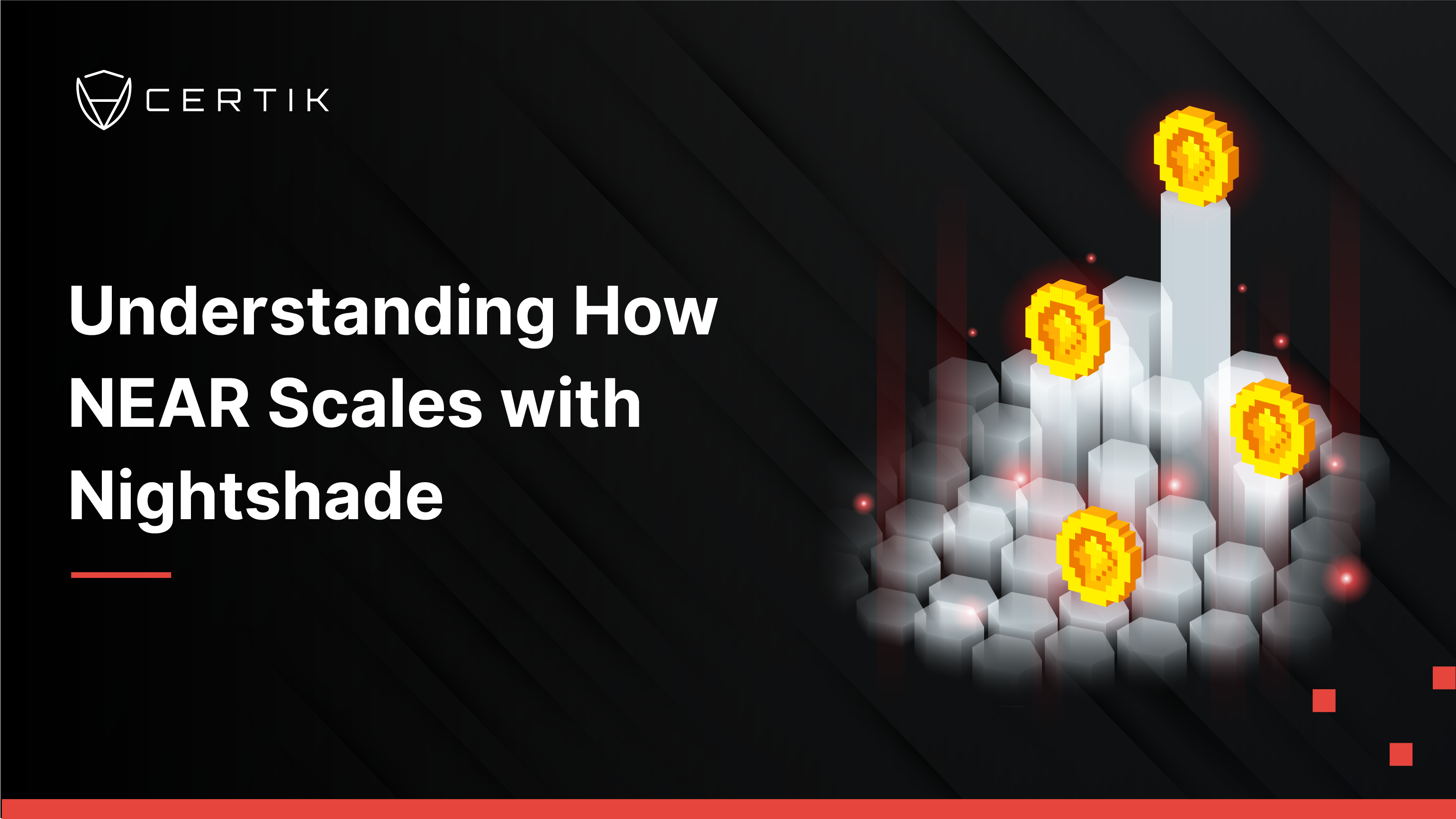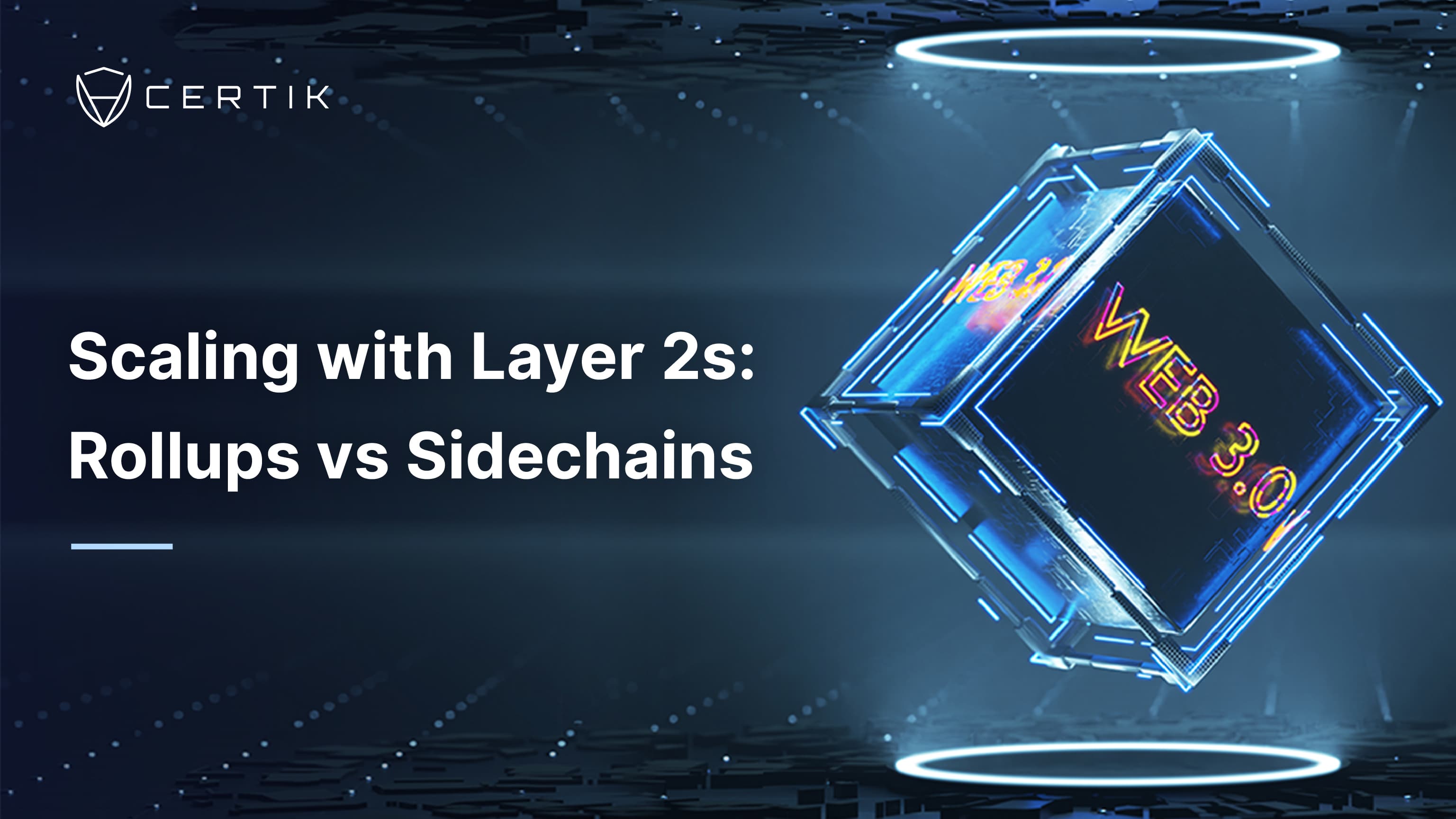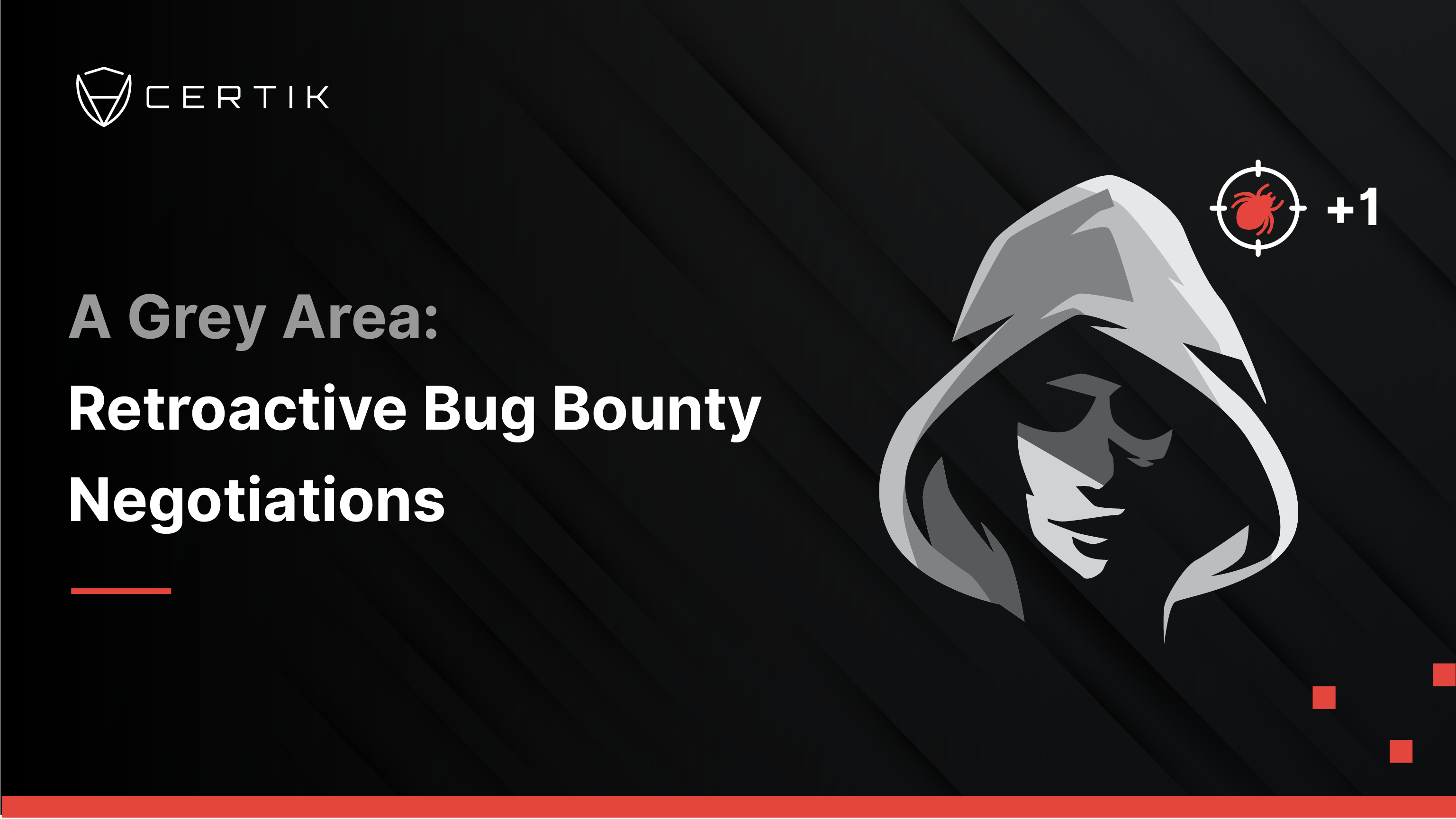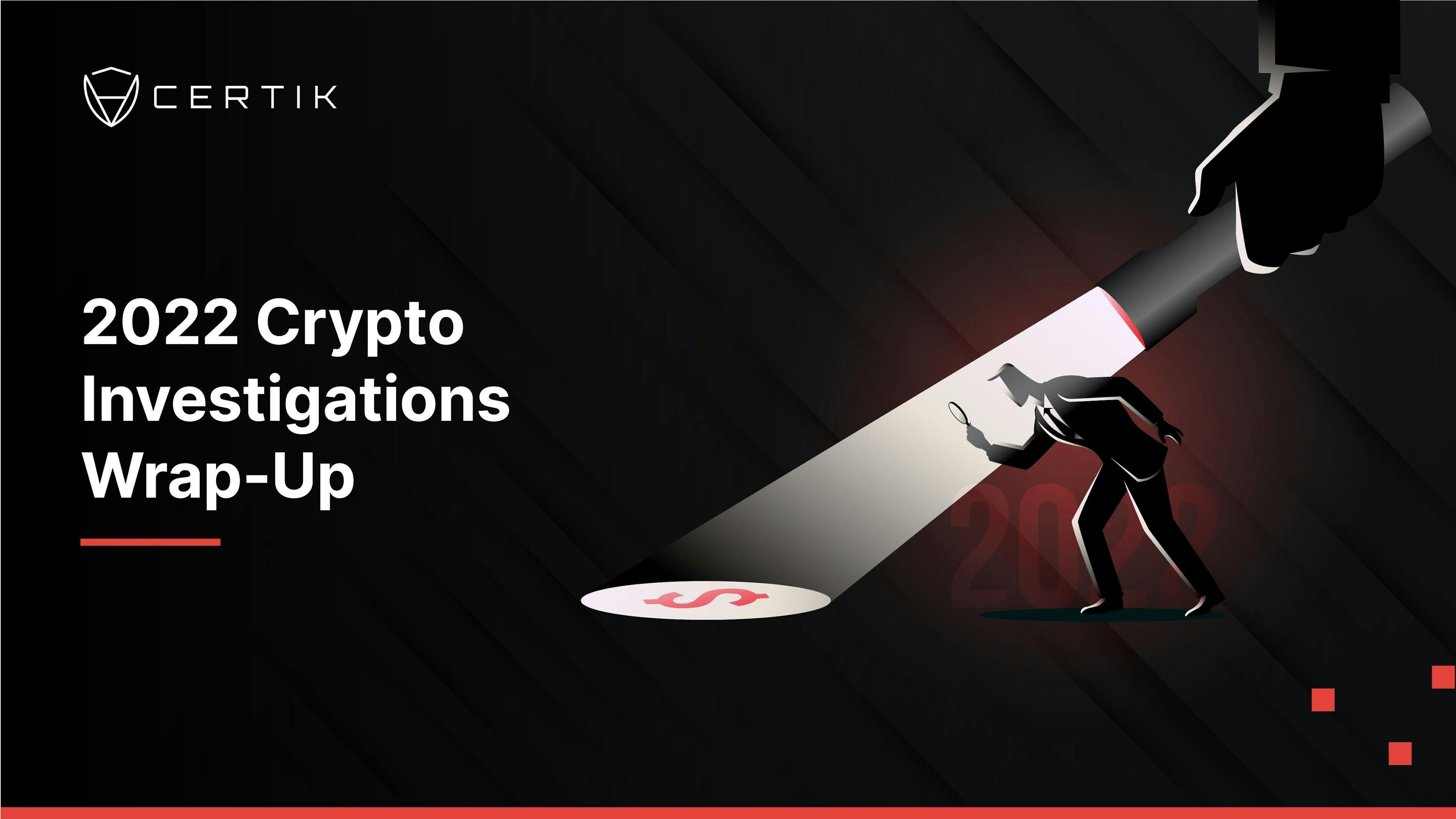
NEAR protocol enters the web3 space with a host of innovations both at the level of its underlying technology, and its overall mission to put usability first. Central to both of these is its game-changing scalability solution known as Nightshade, which implements a unique sharding protocol that will ultimately lead to what it calls a ‘’fully-sharded’ network.
This blog will provide a recap on the need for scalability in blockchains, some of the existing solutions on the market, and how NEAR disrupts and innovates within this space. It will then go on to underscore the importance of NEAR smart-contract audits as a means of bolstering the underlying security of the NEAR ecosystem, and equipping NEAR projects with the confidence they need to succeed.
Scalability problem recap
First, let’s recap the blockchain scalability problem, and why it is so important. As its name suggests, the scalability problem refers to the challenge blockchains face in being able to continue to function as they scale to serve a wide user base.
This is difficult because of blockchain’s need to also be decentralized and secure– in what Vitalik Buterin famously coined as the blockchain trilemma.
Within a network with a small user base this isn’t a problem, as the network has the throughput to process transactions faster than they are occurring. However, as blockchain technology grew in popularity, the networks struggled to process transactions at pace with the demands placed on them. This resulted in congested networks, and far higher transaction fees. Currently, the two largest cryptocurrencies, Bitcoin and Ethereum, can handle 6 tps and 20 tps respectively. To put this in perspective, Visa can handle 20,0000 tps. For a technology with ambitions to become a global payments network, it was clear that the web3 ecosystem had to find ways of handling a far higher rate of transactions per second (tps).
Sharding as a Scalability Solution
Since then numerous solutions to the scalability problem have been proposed, and many new networks have arisen to implement them.
One way of grouping scaling solutions is by dividing them into vertical scaling solutions and horizontal scaling solutions. Vertical scaling attempts to make a network faster by increasing the storage and power of a network's existing nodes. Horizontal scaling attempts to scale by increasing the number of nodes in the network.
Sharding is a horizontal scaling solution that has been adopted by multiple blockchains. It works by dividing the transactions amongst groups of nodes in the network known as ‘shards’. This means that, rather than having to store all the data in the network, nodes only have to store the data that is allotted to them in their shard. They then communicate the result of the transaction to the wider network.
Prior to sharding, each node in a blockchain was required to store the entire network’s data set locally. Whilst highly secure, this also limits the throughput and storage of the network to a single machine.
By distributing the work required over the network, sharding effectively expands the computing power of the network beyond the capacity of a single computer.
Simple Nightshade
NEAR plans to implement Nightshade in phases, with each phase introducing more functionality with the final phase resulting in a ‘fully sharded’ network.
The first of these phases is what NEAR calls “Simple Nightshade”. Simple Nightshade works to shard the state of the blockchain, but not the processing. This means that validators will continue to process all the transactions individually, but the network itself will be split into four separate shards.
To explain this NEAR uses the metaphor of a store with multiple checkout lines. In the beginning NEAR only had one of these checkout lines open. Simple Nightshade has the effect of opening multiple checkout lines, meaning that transactions have more roads to travel down, consequently decreasing congestion, and increasing throughput.
Chunk-Only Producers
After Simple Nightshade, NEAR will expand its functionality by introducing ‘chunk-only producers’.
Chunk-only producers provide a more accessible way for NEAR’s community to take part in the consensus process and become validators.
It does this by allowing users who don’t have the necessary NEAR to run a validator node to produce ‘chunks’ which are parts of the block from a shard (more details here).
This innovative step works to further decentralize NEAR’s network by onboarding a far wider set of validators to take part in securing the network. Not only this, by enabling chunk-only producers, NEAR works to fulfill its promise of putting usability first. It does this by removing the prohibitive restrictions on everyday individuals from taking an active role in the validation process. Now, users with access to entry-level hardware, or even a cloud provider, can set up a node and start earning rewards.
Nightshade
In the next phase, NEAR will introduce Nightshade, which implements a fully sharded network in which both the state and processing are sharded. This means that validators will no longer be required to track all of the shards in the network, and consequently further lowers the hardware requirements for running a block producer on NEAR.
By opening up the validations process in this way, NEAR makes significant strides towards achieving mass adoption by inviting in a far wider population of people to take an active role in the network. In doing so they simultaneously work to further decentralize the network and bolster its security.
Dynamic Resharding
The 3rd phase of Nightshade’s implementation is what NEAR calls ‘Dynamic Resharding’. At this level, NEAR will be able to dynamically split and merge shards to meet demand and resource utilization. This kind of responsiveness will enable NEAR to expand to meet near infinite scalability if needed, and make it resilient to spikes in network usage as and when they occur.
However, NEAR’s innovations do not end with Dynamic Resharding, and instead NEAR is committed to continuing to work to create a more usable and accessible ecosystem for its community. Crucially, it is essential to note that this is aligned with the goal of creating a more decentralized and secure technology, as increased accessibility leads to further decentralization, which in turn bolsters security.
NEAR Smart-Contract Audits
For a network that provides such a high-level of decentralization and security, it is vital that projects looking to build on NEAR ensure that they match this security on their end with a NEAR smart-contract audit.
Innovative technologies such as those offered by Nightshade require a NEAR smart-contract audit has the capacity to adapt to new architectures and needs that this innovation entails. That’s why CertiK’s NEAR smart-contract audit is the best choice for NEAR projects, by deploying state of the art AI technology, in conjunction with leading computer science experts. This ensures that the full security implications of the novel technology are addressed, resulting in a NEAR smart-contract audit that is equipped to seek out even the most hard-to-spot vulnerabilities.
In addition to this, CertiK is the first to offer a NEAR smart-contract audit with KYC verification for project teams. This works to secure trust and accountability between teams and their communities, and gives users the confidence they need to invest and participate in a project.
Of course, web3 security does not end with a NEAR smart-contract audit. Rather, CertiK also offers a diverse and growing tool-kit to support developers in having the strongest possible security posture. Key to this security after launch are the blockchain analytics tools Skynet and SkyTrace, which provide an unparalleled overview of a project’s on-chain activity after launch. This enables NEAR teams to anticipate and respond to potential attack and provides an added layer of security on top of the NEAR smart-contract audit.
CertiK is also proud to introduce a new Bug Bounty scheme, which works in conjunction with the NEAR smart-contract audit to provide an even more granular analysis of a project’s code. CertiK’s Bug Bounty handpicks the leading white-hat hackers to investigate a project’s code and seek out novel attack vectors and vulnerabilities. In doing so, it effectively crowdsources security from sources that have been rigorously vetted and undergone KYC verification.



